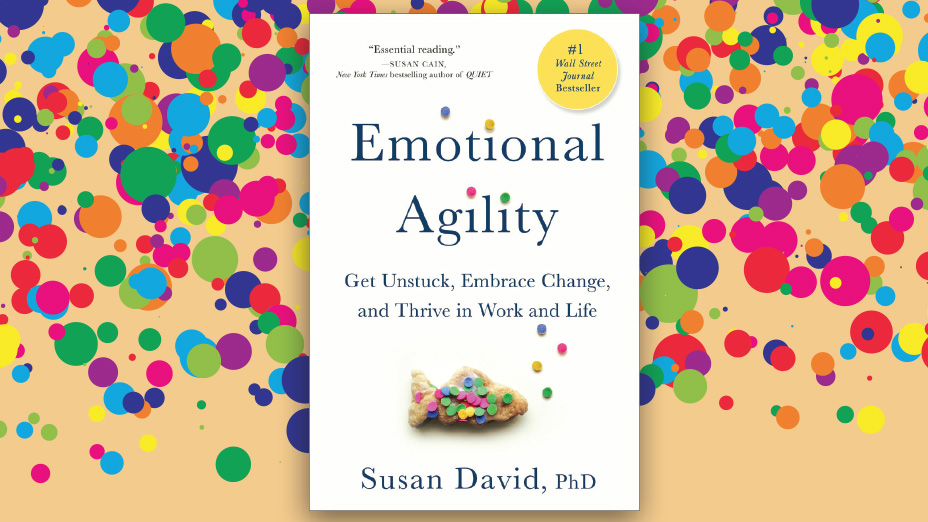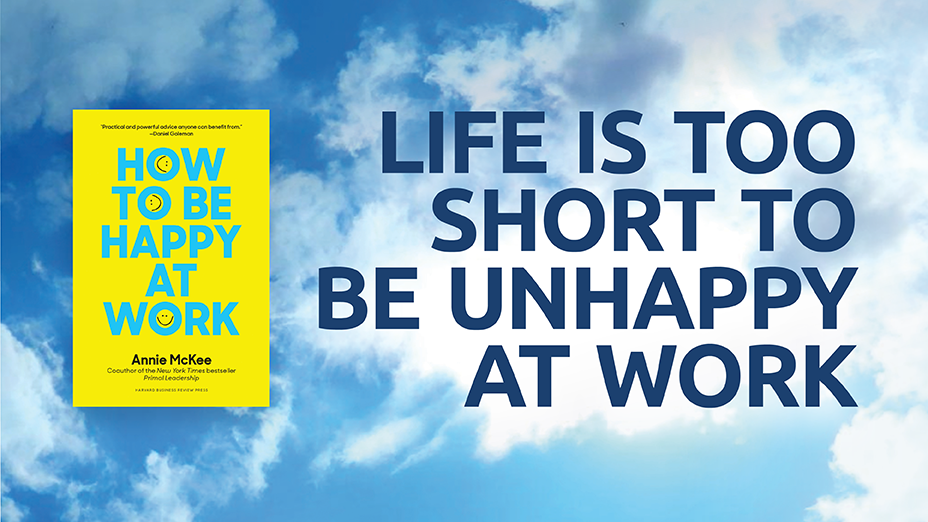A Look at Susan David’s Book, Emotional Agility
Summary written by Paula McLeod
The title of Susan David’s book, Emotional Agility, is intriguing. What is emotional agility? My take on it is that emotional agility is the ability to use emotion rather than be used by it; to detect, interpret and understand when you become emotionally activated. And then to flip it by creating greater emotional attachment to your own values and your view of what’s possible as a person.
Perhaps emotional agility can be a new leadership differentiator. As a first step, mastering our emotions so that they release their grip can remove a potential negative. Beyond that, in today’s world the person who is emotionally available and in tune, not just with family and friends, but with colleagues, teams and others we work with—will certainly have an edge over a person who is not.
What can you do today to improve your emotional agility?
This book grew from an article in Harvard Business Review that was downloaded 250,000 times. The HBR called it a “Management Idea of the Year.” David digs deep into the model she originated in that article. It includes four steps to take you from “Hooked” to “Thriving.”
The steps are:
- Showing up
- Stepping Out
- Walking Your Why
- Moving On
Every step is important, of course, but for me the most actionable was understanding getting hooked and identifying how to “unhook.” Hooked? You know the feeling when you are stuck with a thought or kinesthetic response out of proportion to whatever caused it—you’re hooked. David explains two things that don’t work when you are hooked: Bottling and brooding. Bottlers ignore, push aside, and avoid—sometimes getting repaid with unexpected outbursts. Brooders complain, wearing out their friends, spouses, or themselves as they rehearse what might have been or what will be—but never moving on. David recommends that we instead slow down, show up to the emotions with self-compassion and awareness so we can be in control of ourselves, rather than our emotions controlling us.
Insight #1
Who’s in charge: The Thinker or the Thought?
"Detached observation keeps our transient mental experiences from controlling us."
- Emotional Agility, page 12
A crucial lesson is to separate “self” from thought (or emotion). David has many tips on how to create this distance, which is critical to “Stepping out.” Here are five tips that stand out for me:
Go to “metaview.” Mentally create distance by imagining going above or far away from the thought you are having.
View the thought like a CEO. Imagine you’re the CEO and you are getting a recommendation or opinion from the SVP. Maybe you agree, maybe you don’t. Stop before you agree and act in accordance with the thought that just pops into your head.
Play like LeBron James. When describing his controversial decision to relocate to Miami in 2010, this basketball superstar used the third person to create distance. He said, “One thing I didn’t want to do was make an emotional decision. I wanted to do what’s best for LeBron James and to do what makes LeBron James happy.” You too can use third person to create a new perspective on a rote thought or decision.
Ask, “What the func?” That’s short for “What’s the function?” In other words, what is this emotion trying to tell me? What’s the message here?” This alone could keep you from a Groundhog Day cycle of endlessly revisiting the same emotional reactions over, and over, and over.
Use your words. David describes James Pennebaker’s life work exploring the impact of “emotionally significant writing.” How did people in Pennebaker’s studies achieve “marked increase in their physical and mental wellbeing?” How was it they were “happier, less depressed, and less anxious”? It was by spending 20 minutes a day for three days writing about emotionally significant experiences. You read that right. After that minimal effort the writing group also had lower blood pressure, better immune function, fewer doctor visits, higher quality relationships, better memory, and more success at work! No wonder Pennebaker was asked to help a computer company’s laid off engineers. Months later those who participated in emotionally charged writing sessions were three times more likely to be re- employed than their non-writing colleagues!
Insight# 2
Your Values Will Lead the Way
"If you know your own personal values and generally live by them, you are also likely to be comfortable with who you are. You don’t need to compare yourself with other people because you’re a success—by your own definition."
- Emotional Agility, page 120
In detailing how to move from hooked to thriving, David points out that values are what helps you make the small, conscious decisions that add up to a life well lived. And in case you doubt the importance of making even small decisions consciously, consider this stunning example of unconscious influence: If you are seated next to a purchaser of snacks or entertainment on an airplane you are 30% more likely to also buy! So surround yourself with people who share your values to get where you are going in life.
To guide your conscious choices David advocates awareness of values and a deeper connection to your future. She calls it “Walking your Why.”
To help us identify our values, she recommends we close out each day by habitually asking ourselves, “As I look back at today, what did I do that was actually worth my time?” As a person who usually agonizes over whether I’m living my best life, I found this tidbit very useful. So after a day when I’ve spent an hour or two on not so fun cleaning tasks, I’m delighted/relieved/amazed/rewarded to realize I DO value a clean and well-maintained home, and that value has been honored. So there! (Audible sigh of relief.)
And the book’s take on painful choices grounded in values—such as between parenting time and career time—is refreshing. Her point of view is you can value two important, yet conflicting, things. That if you consciously recognize the push/pull, your guilt can ease as you do your best when attending to each role. In her words, “since values relate to quality—rather than quantity—of action, the amount of time you spend enacting your values doesn’t necessarily reflect how much they matter to you.” Further motivation is provided by some astonishing research that proves awareness and connection to what’s important (a broad and easily understood synonym for “values”) has far-reaching and huge results. In one study, middle school minority students spent just 110 minutes writing about what mattered most to them. Those students improved their GPA’s enough to close the gap with their more privileged classmates. And for some the improvement lasted into high school! A similar second study resulted in female college physics students outperforming students in the control group. Connecting to what matters creates a sense of “self” and strengthens resolve to overcome short-term adversity.





.png)
.jpg)



What Did You Think?